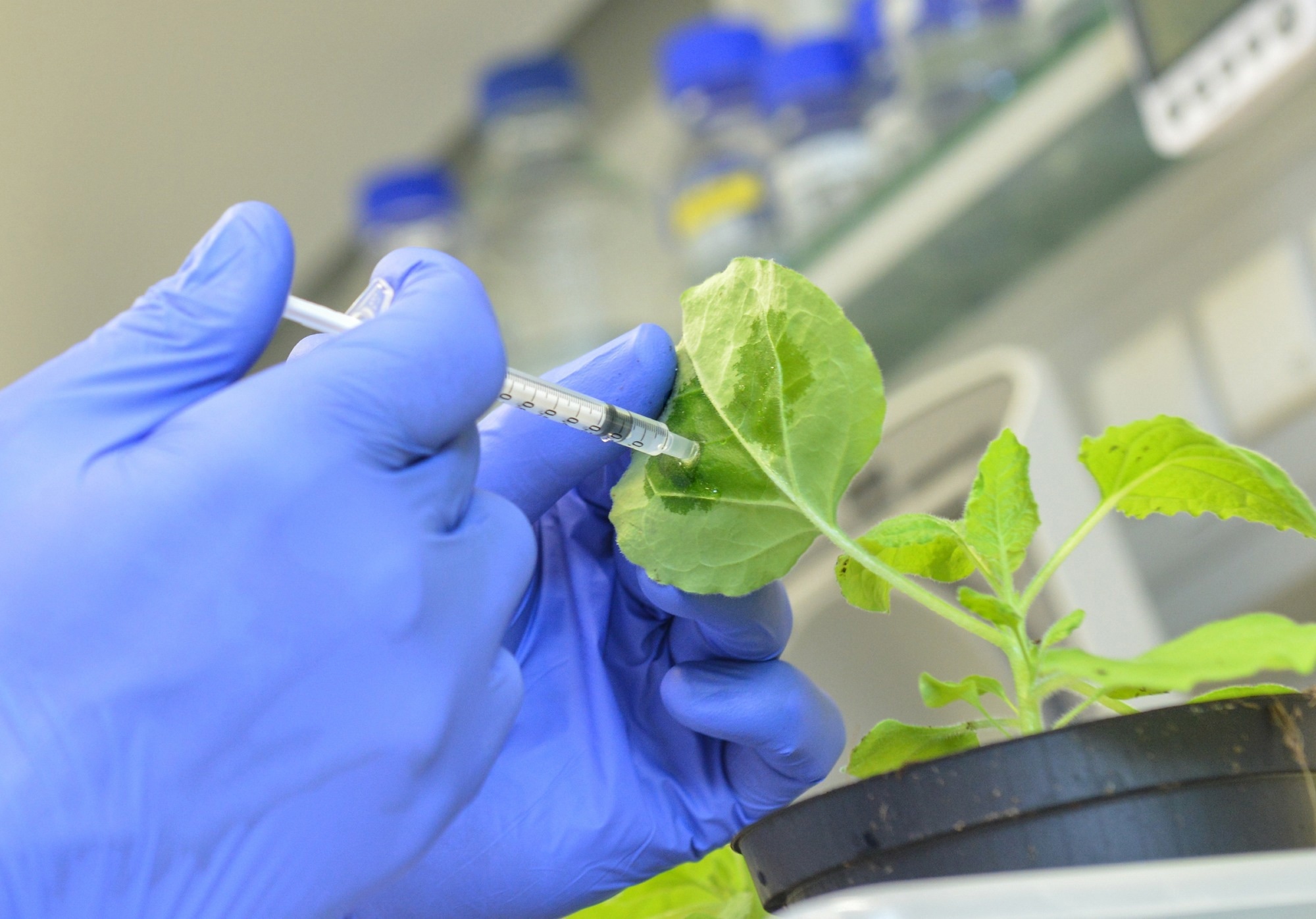Customized RNA or DNA molecules have been shown to effectively combat viral infections in plants, as demonstrated in a recent study conducted by Martin Luther University Halle-Wittenberg (MLU) and published in the International Journal of Molecular Sciences.
 The new active ingredients can be used to protect plants against viruses. Image Credit: Uni Halle/Markus Scholz
The new active ingredients can be used to protect plants against viruses. Image Credit: Uni Halle/Markus Scholz
The researchers achieved a significant success rate, effectively protecting plants from a common virus in up to 90% of cases using these innovative compounds. Moreover, they have developed a method to tailor these compounds specifically to combat the virus. This unique strategy has been secured with a patent by the research team.
In the event of a viral infection, the virus takes control of the plant's cells to replicate. Central to this replication process are viral RNA molecules, which act as templates for protein synthesis.
Professor Sven-Erik Behrens, affiliated with the Institute of Biochemistry and Biotechnology at MLU, highlights the fact that viruses need to produce their own proteins to replicate. Behrens and his research team have dedicated their efforts to find ways to disrupt this process by targeting and destroying the viral RNA molecules inside the cells.
The researchers outlined the process of achieving this using the “antisense” method. This method involves the use of short, artificially created DNA molecules called antisense oligonucleotides (ASOs). Within the plant cells, these ASOs guide cellular enzymes, which function as scissors, to target the foreign RNA for degradation.
For this process to work, it is crucial to identify a suitable target structure in the viral RNA which the enzyme scissors can attach to.”
Sven-Erik Behrens, Professor, Institute of Biochemistry and Biotechnology, Martin Luther University Halle-Wittenberg
However, finding those accessible sites is tricky: most potential target RNA molecules have a very complex structure, and other cell components also mask them.
Behrens says, “This makes it even more difficult to attack them directly.”
Several years back, Behrens’ team encountered this issue when attempting to utilize short RNA molecules (siRNA) to enhance a comparable process in plants called RNA interference. During that period, the scientists created a technique for pinpointing appropriate and reachable locations in viral RNA.
Recent research demonstrates that the identical method can also be applied to ASOs, and these agents exhibit a comparable protective impact in plants.
We were pleasantly surprised by the results because we were not sure if it would work. Even though RNA interference and antisense operate similarly, the active enzyme complexes are completely different. However, we were able to show that the RNA sites determined using our method are actually accessible for both processes.”
Sven-Erik Behrens, Professor, Institute of Biochemistry and Biotechnology, Martin Luther University Halle-Wittenberg
The outcomes were remarkable. Trials conducted with the enhanced ASO active compounds demonstrated that plants were safeguarded from infection by a model virus in as much as 90% of instances.
ASOs are not only very precise, they are also relatively easy and inexpensive to produce. Similar active substances have also been used in humans for several years with few side effects. This is another argument in favor of their potential use in food.”
Sven-Erik Behrens, Professor, Institute of Biochemistry and Biotechnology, Martin Luther University Halle-Wittenberg
Biochemists are additionally exploring alternative uses of recently devised techniques, such as combating human-infecting viruses.
The patent and the research study mark a significant achievement in the “RNA PROTECT” research project at MLU, which is being supported with approximately 1.2 million euros from the Federal Ministry of Education and Research.
The goal is to assess the commercial potential of MLU's research efforts in this field and, if possible, establish a company. Additionally, the study received funding from the State of Saxony-Anhalt and the Deutsche Forschungsgemeinschaft (German Research Foundation, DFG).
Source:
Journal reference:
Gruber, C., et al. (2024) Effective Antiviral Application of Antisense in Plants by Exploiting Accessible Sites in the Target RNA. International Journal of Molecular Sciences. doi.org/10.3390/ijms242417153